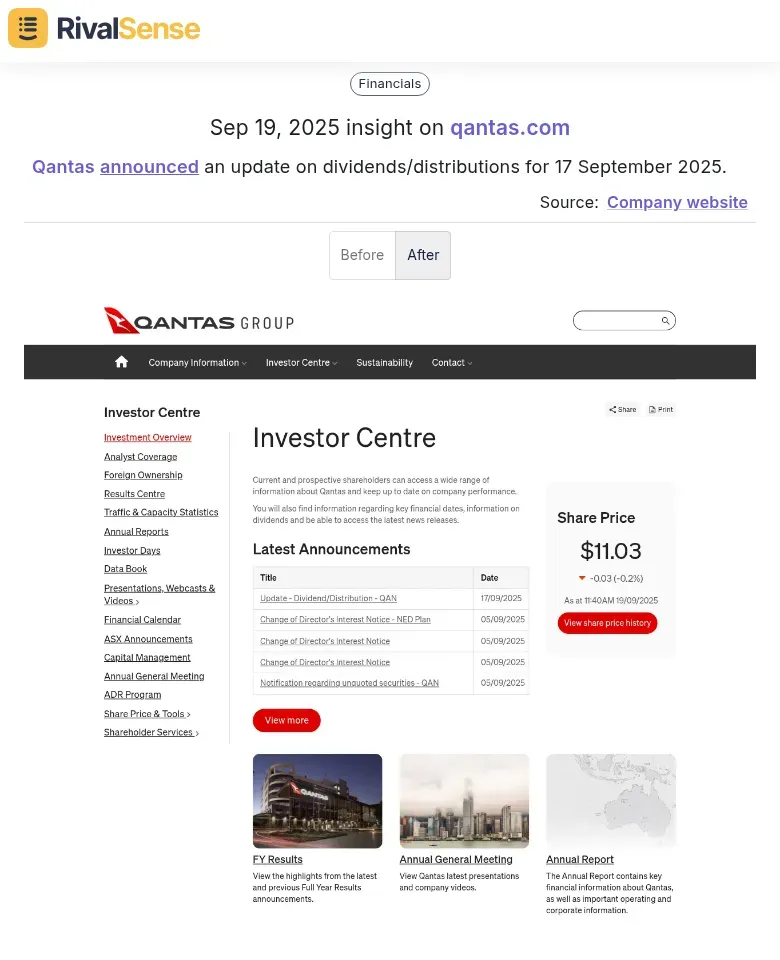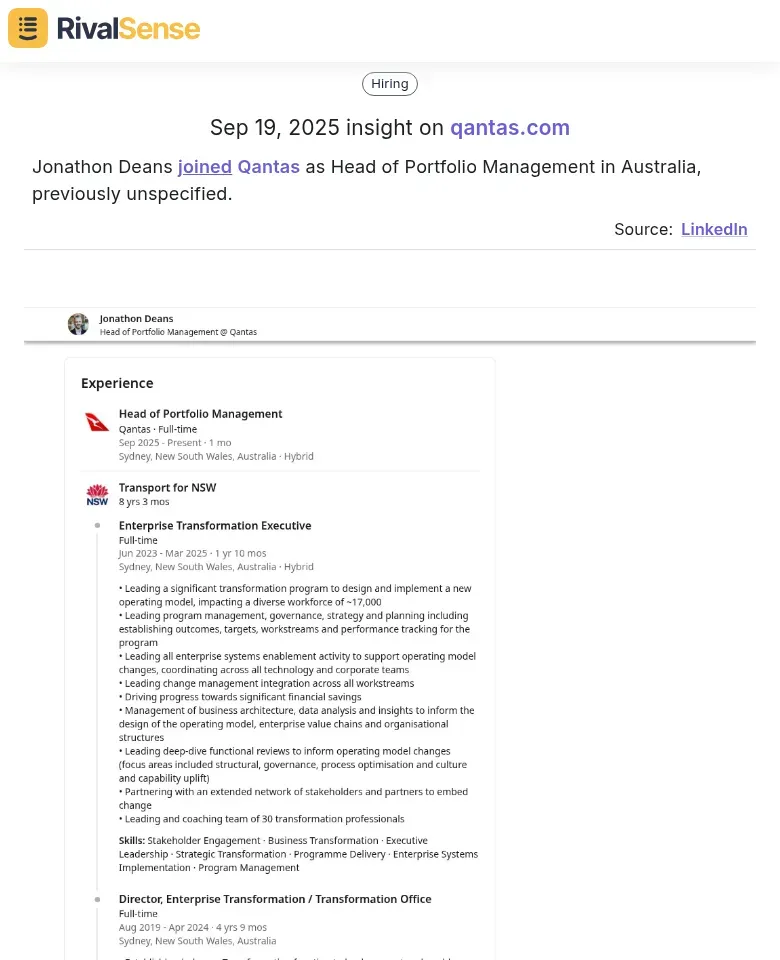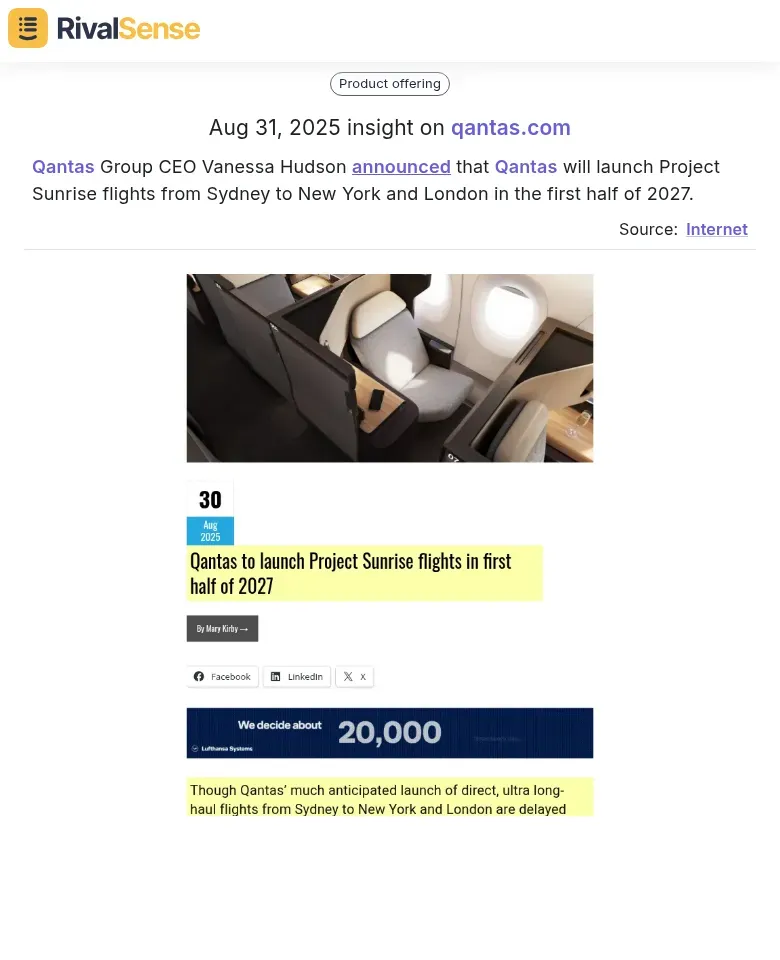Airline Competitor Thought Leadership Analysis Cheat Sheet
In the fast-paced airline industry, thought leadership is a key differentiator that shapes market perceptions and customer loyalty. By analyzing how competitors communicate their strategies, such as through sustainability pledges or digital transformation initiatives, you can gain valuable insights into their future directions. This analysis goes beyond surface-level news to decode strategic intent, helping you anticipate shifts and stay competitive.
For instance, when a rival emphasizes AI partnerships, it signals a focus on efficiency, prompting you to evaluate similar investments. Tracking announcements like new route launches or executive appointments allows you to identify threats and opportunities early. Practical steps include setting up alerts for press releases and using dashboards to monitor key moves. 💡 Pro Tip: Start by identifying your top three competitors and regularly reviewing their content for patterns.
Analyzing Financial Updates for Strategic Insights
Financial updates provide a window into an airline's health and strategic priorities. They reveal cash flow stability, investment focuses, and overall confidence, which can influence competitive moves. For example, dividend changes often indicate financial strength or stress, directly impacting market dynamics.
Consider this real-world insight from RivalSense: Qantas announced an update on dividends/distributions for 17 September 2025. This type of financial insight is valuable because it helps you assess a competitor's capacity for aggressive pricing or expansion, allowing you to benchmark performance and adjust your strategy proactively.

Actionable Steps for Financial Analysis:
- 📊 Monitor quarterly reports for dividend trends and capital expenditure plans.
- 🎧 Listen to earnings calls for management insights on growth strategies.
- ⚙️ Automate tracking with tools like RivalSense to stay updated on key metrics effortlessly.
By comparing metrics like revenue per available seat mile (RASM), you can anticipate fare wars or new route launches and respond effectively.
Decoding Leadership Changes and Talent Acquisition
Executive appointments and hiring trends are powerful indicators of strategic shifts in the airline sector. New leaders often bring expertise that aligns with emerging priorities, such as sustainability or technology, signaling upcoming business model changes. Analyzing these patterns helps you predict competitor moves and identify partnership opportunities.
For example, RivalSense captured that Jonathon Deans joined Qantas as Head of Portfolio Management in Australia. This leadership insight is valuable as it highlights a focus on optimizing asset management, which could lead to more efficient operations or strategic investments.

Checklist for Assessing Leadership Changes:
- 👥 Review executive backgrounds for expertise in key areas like ESG or digital innovation.
- 🔍 Track job postings to spot skill demands, such as roles in AI or sustainable aviation.
- 📈 Predict impacts: e.g., sustainability hires may precede fleet upgrades or green initiatives.
This approach enables you to stay agile and counter competitive threats before they fully materialize.
Evaluating Major Strategic Initiatives and Innovations
Major initiatives, such as route expansions or technology adoptions, reveal an airline's long-term vision and competitive positioning. Evaluating these projects helps you understand market trends and refine your own strategies. For instance, a competitor's launch of long-haul flights can indicate a push for global dominance.
A recent RivalSense insight shows Qantas Group CEO Vanessa Hudson announcing Project Sunrise flights from Sydney to New York and London in the first half of 2027. This major initiative insight is crucial as it uncovers ambitious growth plans, allowing you to prepare for market disruptions or explore collaboration opportunities.

Practical Evaluation Steps:
- 🚀 Analyze press releases for initiative details, including timing and execution phases.
- 📅 Create timelines of competitor launches to identify industry patterns.
- 🔄 Conduct SWOT analyses to inform your response strategies and innovation efforts.
By studying rollout tactics, you can adopt best practices and avoid common pitfalls in your own initiatives.
Integrating Insights into Your Competitive Strategy
Effectively leveraging competitor intelligence requires a structured approach to continuous monitoring and action. Start by establishing a system for real-time updates, such as automated alerts and centralized dashboards, to ensure you never miss critical insights. This proactive mindset helps you stay ahead of market shifts without manual effort.
Next, translate findings into actionable plans. For example, if a rival emphasizes digital transformation, consider enhancing your own tech offerings or marketing campaigns. Foster a culture of intelligence by training teams to share insights regularly.
Framework for Integration:
- ⏰ Schedule weekly reviews of competitor activities using tools like RivalSense.
- 🤝 Hold cross-departmental meetings to discuss insights and prioritize adjustments.
- 📊 Assign a 'competitive intelligence champion' to lead efforts and validate strategies with data.
This systematic approach ensures that insights drive quick wins and long-term growth, keeping your business agile.
Ready to Elevate Your Competitor Analysis?
Streamline your tracking with RivalSense—try it for free at https://rivalsense.co/ and get your first competitor report today! From product launches to pricing updates, our automated insights help you turn intelligence into action effortlessly.
📚 Read more
👉 4 Quick Hacks to Analyze Competitor Products for Key Account Growth
👉 Competitor Analysis in Action: Insights from OpenAI's Recent Activities
👉 Mastering Competitor Pricing Models: A Strategic Guide for B2B Leaders
👉 5 Key Account Management Mistakes Influencer Platforms Must Avoid
👉 How XTX's TernFS Open Source Move Revealed ML Strategy Gaps
